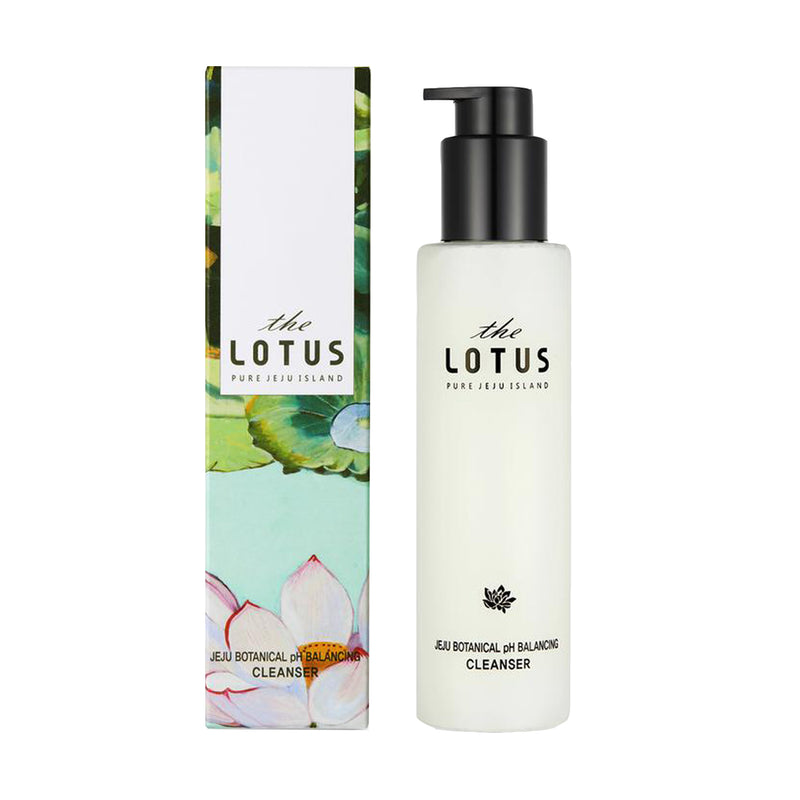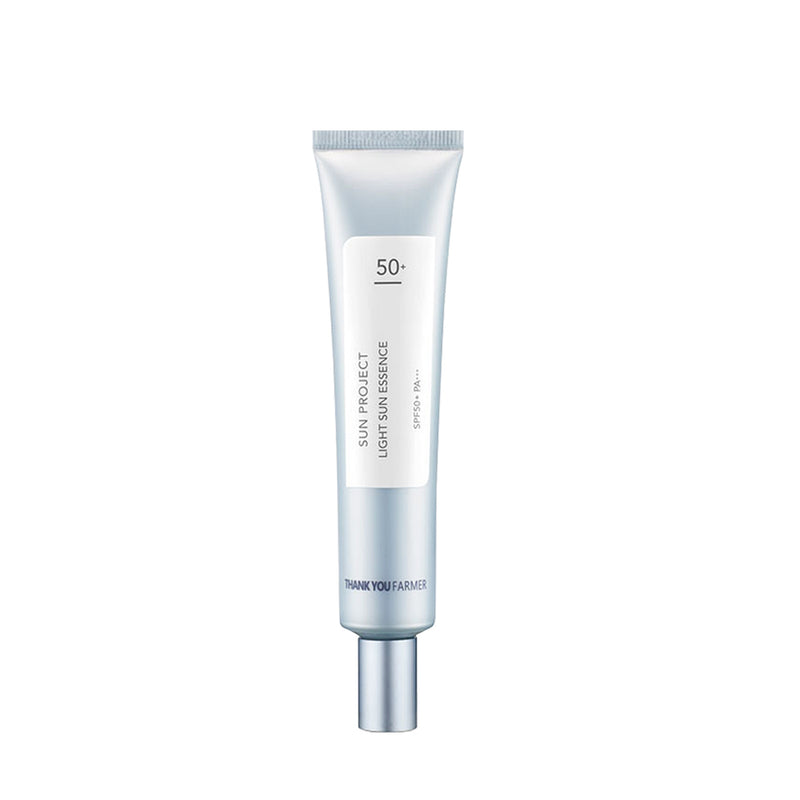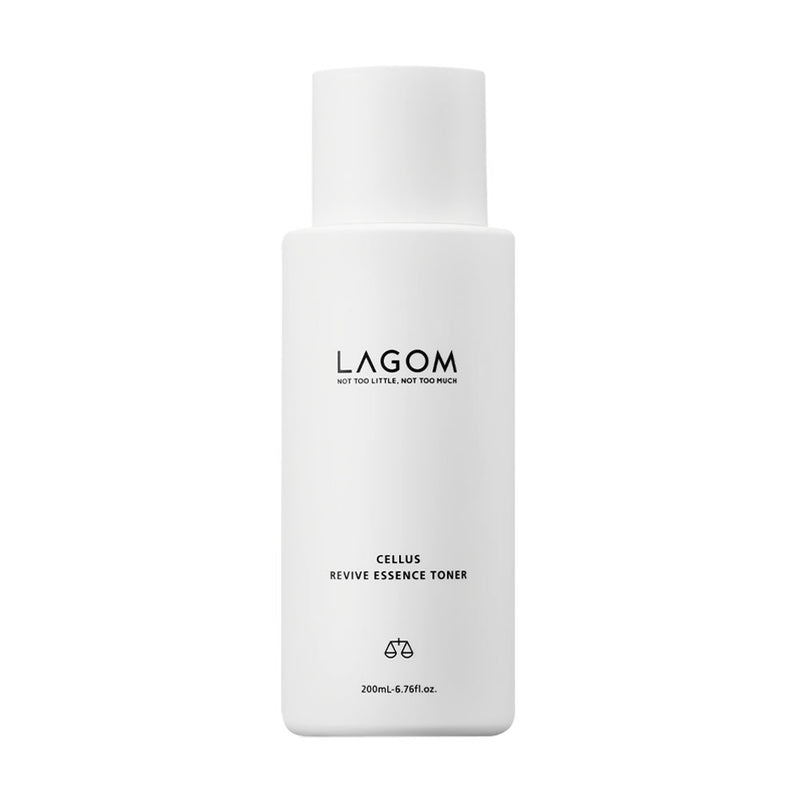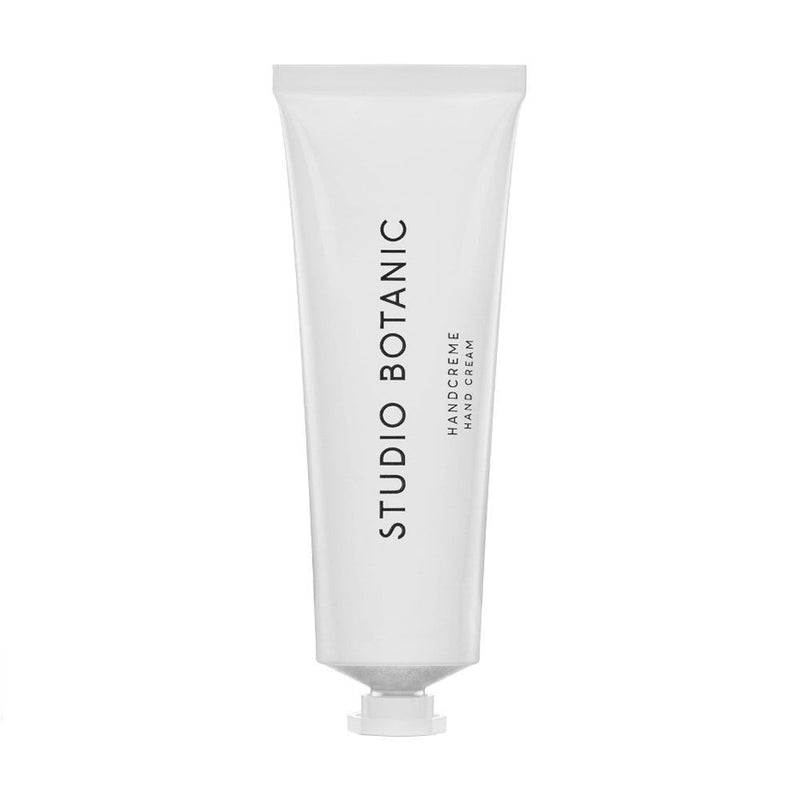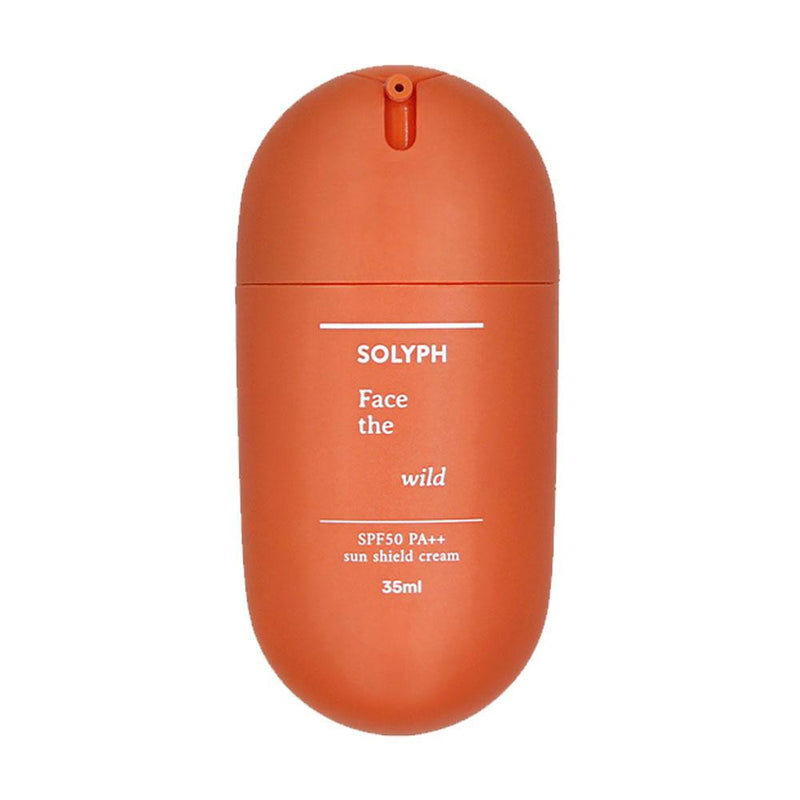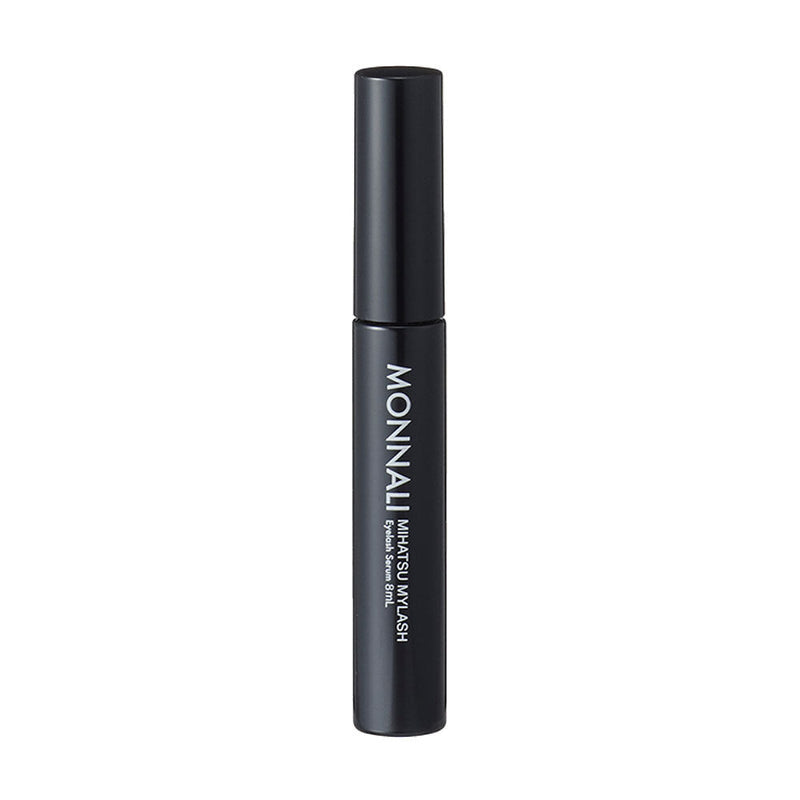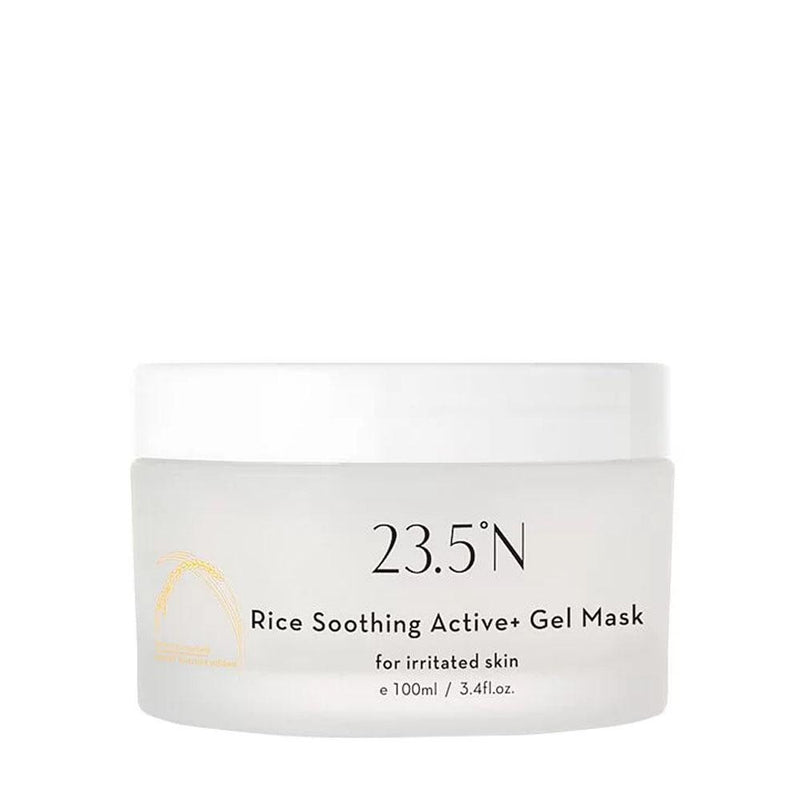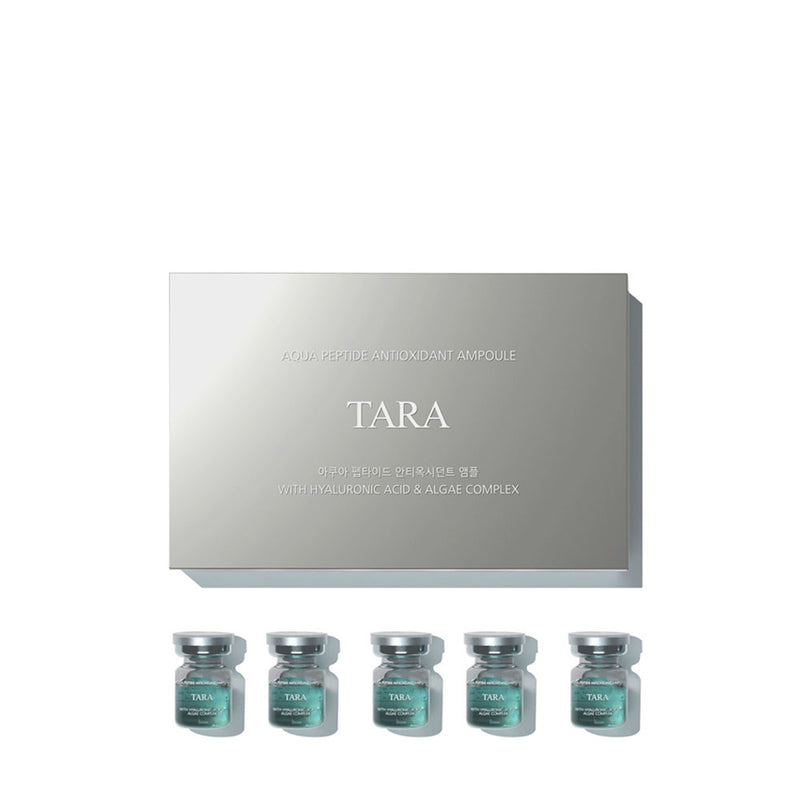We’re pretty sure that achieving beautiful, flawless skin has been at the top of your mind at least once before. In an incredibly diverse world, the desire to achieve beautiful, youthful looking skin is one of the few things that unites us all and skincare is a widely discussed topic all around the world.
It is this common desire that has seen many of us flock to whatever fad routine, innovative product or miracle ingredient that’s trending on social media, often with less than satisfactory results. We’ve seen routines like the 10-step Korean skincare routine become popularised, ingredients like snail mucin, donkey milk and horse oil dominate our Instagram and Tiktok feeds and then disappear as quickly as they arrived.
While skincare used to be something only women would pay attention to, men’s skincare has also evolved significantly and is continuing to grow. A growing number of men all over the world, including Singapore, have started to pay more attention to their skin, and we now see an increasing number of male influencers becoming avid users of and advocates for quality skincare products.
If you haven’t yet gotten serious about your skincare, the good news is that it isn’t too late to start now. Skincare is a labour of love, self-love to be specific, and taking care of your skin can have a lot of benefits not just to your skin but also to your confidence and mental well-being. Here’s a comprehensive guide to putting together your own skincare routine, and how to choose the right skincare products regardless of whether you have acne-prone skin or dry and sensitive skin.
01 An Introduction To Skincare
What Is Skincare
Our skin not only serves the purpose of holding all of our internal organs in place, it is also our body’s first line of protection against harmful pathogens. While extensive skincare may appear to be mostly an act of vanity, it is actually an essential part of our lives as strong and healthy skin serves as a barrier that prevents harmful external elements from affecting our bodies.
Skincare is the process of caring for and maintaining our body’s largest organ, the skin. It involves a range of practices such as cleansing and moisturising, that supports our skin’s integrity, enhances its appearance and relieves our skin of certain skin conditions. Just like you would regularly exercise to maintain your health and vitality, skincare needs to be performed consistently in order for it to pay off.

Why Is Skincare So Important?
As the saying goes, prevention is better than the cure, and this couldn't be more true when it comes to skincare; it's a lot easier - and cheaper - to prevent skin problems with a discipline skin care regimen than it is to scurry around looking for solutions to preventable skin problems later on. Certain skin problems such as eczema and acne can even be potentially embarrassing and can affect you in ways that go beyond just skin health.
With skincare it isn’t about going big once in a while but rather routinely practising skincare and exercising good skincare habits. Those $300 facials or once a month laser treatments at the dermatologist are not only expensive but kind of pointless if you aren’t practising a good skincare routine daily.
It is particularly beneficial to inculcate a good skincare routine at as young an age as possible as the good habits are likely to stick with you throughout life. A good routine can also help control hormonal acne brought on by puberty and prevent long term skin concerns such as acne scars and discolouration.
But if you haven’t yet developed a good skincare regimen for yourself yet, do not fret. While it might take a little longer for you to see the desired results because the turnover rate of our skin cells slows down as we age, it’s still not too late to start. A good skincare routine with the right skincare products can help treat skin concerns such as wrinkles, loss of elasticity and pigmentation that is often associated with ageing.
A disciplined skincare regimen can also support skin cell turnover by assisting in the removal of dead skin cells so that your body can replace them with newer cells which appear more youthful and radiant. Nourishing treatments also help strengthen and protect your skin, slowing down the ageing process which translates to healthier skin, less makeup and an increase in self confidence!
02 Starting Your Own Skincare Routine
Starting your skincare routine can be a daunting task with the sheer number of products and self proclaimed beauty gurus dominating our social media feeds. Before you start randomly trying every single product claiming to be “amazing!” or “the best skincare product!” you would first need to understand your skin type.
Everyone's skin type is a little different and the way our skin reacts differently to various factors such as environment, specific skincare products or ingredients. Understanding this will determine which products and routines would be most effective for you. Taking the time to learn and understand your skin's specific requirements will narrow down the options and will save you time, money and ultimately, lead to better skincare outcomes.
Determine Your Skin Type
The most important thing you need to know about your skin is what your skin type is. While your skin type can temporarily change in response to external factors, it would always tend towards the skin type that you were born with. Your skin would generally fall into one of these 4 categories:
Normal Skin also known as healthy skin, is a term that refers to a well-balanced skin in which the overall sebum and moisture levels in your skin are well-balanced. Your t-zone (forehead, nose, and chin) may become oily at times in response to external factors but this is easily managed because your skin is neither too dry nor too oily.
Combination Skin is probably the most common skin type. It is typically a combination - hence its name - of dry and oily skin, with the T-zone tending to a little more oily and the cheeks being mostly dry. Most of us fall within the spectrum of combination skin and depending on how drastic the differences are, selecting the right products can be tricky.
Dry Skin occurs when your skin produces less sebum than normal, healthy skin. Sebum is the natural oils that protect your skin and it is this lack of it that reduces your skin’s ability to retain moisture and build a protective shield against external agressors. Some telltale signs of dry skin are a sensation of tightness or a rough, scaly or flaky appearance.
Oily Skin is the complete opposite of dry skin where your skin has a heightened production rate of sebum. In addition to the typical oiliness you get in your T-zone, your cheeks would also often get oily as well. Oily skin can appear glossy and your pores might also be visibly enlarged creating an uneven skin complexion.
You can easily find out what your natural skin type is by following these 2 simple steps:
Step 01: Cleanse your face with a mild cleanser and leave your skin for 30 minutes, do not apply anything.
Step 02: Check your skin after 30 minutes, either use blotting paper or clean hands to check if your face is getting oily.
You have oily skin if your entire face becomes oily, both the T-zone and the cheeks. You have combination skin if only your t-zone gets oily while your cheeks remain dry and you have dry skin if your skin feels tight and there’s minimal or no oil on your cheeks and T-zone. And if you’re lucky, you have normal or healthy skin if your skin doesn’t feel tight and there doesn’t have much oil on both your T-zone and cheeks.
Identify Your Skin Concern
So you now know what skin type you have, next up is identifying what your primary skin concerns are. Skin concerns are basically skin problems or areas of concerns that could be naturally occurring such as in the case of skin sensitivity or hormonal acne. They can also be caused by lifestyle choices such as lack of sleep and regular consumption of alcohol or smoking; or even caused by environmental factors like long hours under the sun or in air conditioned offices.
It's important to understand what your main skin concerns are as they help you to set realistic skincare goals and make the selection of the right skincare products much easier. Knowing both what skin type you are and what concerns you have will help building an effective skincare routine much easier and result in better outcomes.
Do note that you should only have one skin type but can have multiple skin concerns. Depending on which website you’re on, you’ll probably find an endless list of potential skin concerns but we will cover the 3 broad and common concerns:- Ageing or Premature Ageing, Acne and Acne Scarring and Sensitive Skin.
a. Premature Ageing
Since the dawn of time, we’ve been seeking ways to not only prevent ageing but even turn back the hands of father time. Unsurprisingly, Ageing or Premature Ageing is one of the most common skin concerns. While skin ageing is a natural process it can also be accelerated by environmental and lifestyle choices which is why there are many products that aim to address this concern.
Ageing is also a very broad concern that encompasses several smaller skin concerns such as fine lines and wrinkles around the eyes, brows and smile lines. It is also characterised by a loss of skin elasticity that can result in saggy skin, and skin discolouration - sometimes called age spots - and uneven skin tone and/or dull looking skin.
Hyperpigmentation is a common symptom of ageing. It is a usually harmless condition in which patches of your skin become darker in colour than the surrounding skin and is caused by excess melanin in your skin. It can happen as part of the natural ageing process but can also be caused by sun exposure where UV rays speed up the production of melanin.
b. Acne and Acne Scarring
Acne and the repercussions of acne such as discolouration and scarring is another major skin concern that most of us would have experienced at some point of time in our lives. It can be brought about by hormonal changes during puberty or during your menstrual cycle or be caused by poor skincare habits.

There are many types of acne that broadly fall into two categories, non-inflammatory like white heads and black heads, and inflammatory, the red and painful kinds like papules, pustules more commonly known as pimples. The causes for acne vary but they typically occur due to the clogging of pores due to excess sebum, impurities and bacterial infection.
To make this concern even more frustrating, acne scarring can occur even after the acne has healed. They are a result of inflammation of blemishes and are caused when the swelling of the acne pore breaks down the wall of the pore. Most acne scarring is small and heals quickly but they can sometimes spill over to surrounding tissue causing much deeper scars.
c. Sensitive Skin
While not a medical diagnosis in itself, sensitive skin is another broad concern that affects many of us. There are many potential causes mainly due to allergies or hypersensitivity to everyday items like detergents, cosmetics, fragrances and even jewelry. Reactions can range from the mild such as tenderness and itchiness to more serious swelling, rashes and blisters.
While most of us report skin sensitivity to household and skincare products that can cause stinging or redness, dermatologists typically look for signs of pustules, bumps or skin erosions, very dry skin where the skin’s nerve endings are not protected, and/or a tendency toward blushing or skin flushing, in diagnosing sensitive skin.
Regardless of where you sit on the spectrum, sensitive skin can be a major concern and usually treatments involve strengthening your skin’s protective barrier and identifying and preventing exposure to the irritant that’s causing the issue. Proper care can avoid more serious and embarrassing skin conditions such as eczema, psoriasis, hives or rosacea.

03 About The Steps In A Skincare Routine
Now that you know what your skin type is and have identified your main skin concerns, it's time for you to set your skincare goals and start building your skincare routine. There are many skincare routines that range from the faddish to the outlandish. It's important to remember that while that routine might work for one person, it won’t work for everyone.
One of the more popular skincare routines that has found mainstream adoption here in Singapore is the comprehensive 10-step Korean Skincare Routine. Though the basic skincare routine involves at least one cleansing, one toning, one moisturising and a sun protection step, the 10-Step Korean Skincare Routine Expands in a skincare layering regime to increase the efficacy of your routine.
While it might seem a lot to do 10 steps morning and night, every single day, you don’t actually always have to do all 10 steps. But a good understanding of it will allow you to tailor it to fit into your lifestyle and schedule without compromising your daily skincare routine. You’ll even be able to take inspiration from those social media trends we mentioned earlier, and confidently try out new products that you think might work for you!
Step 01: Oil-based Cleanser
Oil cleansing is the first of two cleansing steps in the 10-Step Routine, which together are sometimes referred to as Korean Skincare Double Cleanse Routine. The double cleanse routine starting is important for two reasons, firstly, an oil cleanser is better at dissolving certain impurities that water based cleansers are unable to and secondly, modern toners especially those from Korean skincare brands tend to focus on treatment rather than cleansing and purifying.
This step is important if you frequently wear makeup, especially waterproof makeup as water based cleansers might not be the best at removing this. Oil cleansers loosen and melt away water resistant makeup and other oil based impurities like sebum for the foam cleanser to lift off your skin at the second cleansing stage.
Oil cleansers can also benefit those with oily skin because many oil cleansers contain natural oils that are high in linoleic fatty acid which oily skin typically lacks. Rosehip, Jojoba and Grapeseed are some good examples and they can actually help to unclog pores and strengthen rather than strip the skin barrier which can cause sebum production to go into hyperdrive.
Step 02: Water-based Cleanser
Cleansing with an oil-based cleanser is followed up by a second cleansing step using a water-based cleanser such as a foam cleanser or a gel cleanser. Water-based cleansers help to dissolve the water-based impurities in your skin such as dirt and sweat that your oil cleanser didn’t pick up. Surfactants in these cleansers are also more effective at lifting impurities off your skin.
Regardless of whether you have oily skin, dry, combination or sensitive skin, aestheticians and dermatologists recommend double cleansing to thoroughly remove any dirt and impurities on your skin. While it's recommended to do the double cleanse with an oil based and a water based cleanser, the double cleanse can also be done with two foam or gel cleansers based on your skincare needs.
Some ingredients you can look out for are Green Tea, Rice Extract and Pearl Extract.
- Cica, Green Tea: Soothing and calming, helps reduce skin irritation and redness
- Rice Extract: Limits inflammation and controls the appearance of oil on the surface of your skin, some fermented versions may even help to increase collagen production
- Pearl Extract: Gives your skin an instant youthful glow. They restore balance in your skin, promote regeneration, and can even reduce skin discolouration.
Step 03: Exfoliator
Exfoliation helps remove dead skin cells and helps to promote the regeneration of new skin cells which helps keep your skin looking young and healthy. It helps clean out your pores and can aid in the absorption and effectiveness of your follow on skincare products. Your skin often feels and appears smoother and visibly brighter after exfoliating.
There are two kinds of exfoliating products, physical and chemical. Physical exfoliators, as the name suggests, makes use of ingredients such as apricot seeds, microbeads and black sugar to physically exfoliate. This can cause irritation to those with dry skin or sensitive skin where it can aggravate your skin. Chemical exfoliation which typically uses Alpha or Beta Hydroxy Acids (AHA and BHA) like Lactic Acid to exfoliate is often preferred.
While an essential step, it is not recommended to exfoliate on a daily basis because excessively exfoliating can strip your skin of essential oils and moisture, irritate your skin and inadvertently cause other skin problems to arise. Exfoliate once to twice a week, concentrating on your nose and the visible pores on your cheeks.
Step 04: Toner
So what is a toner and why is it important? Imagine trying to wash your dishes with a dry sponge, it does not foam your dishwashing liquid well and is difficult to use. Your skin is like a sponge ready to absorb all that skincare goodness from your expensive serums and essences. In order to ensure that they get absorbed well, it is important to prime your skin first.

Toners are the ultimate priming product. In addition to prepping your skin to absorb your skincare treatments, they often also confer additional benefits such as cleansing, purifying, calming your skin. You can pat your toner in with your hands, but it is best to wipe it across your face with a cotton pad.
Some great ingredients to look out for include Aloe, Centella Asiatica and Rosewater.
- Aloe Vera: Known for its calming and deep hydrating effect on our skin. Contains antibacterial properties to keep pimples at bay
- Centella Asiatic: Also known as Cica, is an antioxidant-rich medicinal plant that helps to speed up skin cell regeneration and collagen production. Increases hydration while repairing dry, irritated skin
- Rosewater: Balances skin’s natural oils, naturally hydrates, and its antioxidant properties help to nourish and protect your skin
These are great ingredients to look for in toners for sensitive skin, oily skin, dry skin, and combination skin as they are natural ingredients.
Step 05: Essences
Essences are lightweight liquid treatments that contain a concentrated blend of hydrating, anti-ageing, and complexion-enhancing ingredients that effectively infuse key vitamins and nutrients into your skin. It also helps your skin absorb richer skincare products such as serums and ampoules that follow this step.
Some popular ingredients to look out for include Rice Bran Extract, Birch Juice, Hyaluronic Acid and Yeast.
- Birch juice: Provides healing and anti-ageing properties, is capable of reducing inflammation, purifying and hydrating your skin.
- Hyaluronic acid: Alleviates dry skin due to its ability to draw and hold water in your skin. It also reduces the appearance of fine lines and wrinkles. When using hyaluronic acid, take note that you need to first hydrate your skin as it may pull water from deep inside your skin if there isn’t enough moisture on the surface of your skin, causing even more dryness.
- Yeast: Rich in vitamin B, which helps in promoting skin integrity, it also helps to rebalance your skin to combat acne, seborrhea, and other such conditions.
Step 06: Boosters, Serums, Ampoules
Boosters, serums, and ampoules are all concentrated skin treatments packed with powerful ingredients that are used to target specific skin concerns such as acne, fine lines, and hyperpigmentation. Some of these skin treatments don’t have to be applied all over your face and can be spot-applied depending on what they do.
Depending on what your skincare goal is or the concern that you are looking to treat, the ingredients used might differ but some popular ingredients include Soybean Extract, Tea Tree and Vitamin C.
- Soybeans: Make your puffy or tired-looking skin appear firmer and younger because it helps to promote collagen production. It is said to also reduce the appearance of sun damage like age spots and scars from sunburns.
- Tea tree: Contains anti-inflammatory properties that help to soothe and relieve irritated skin. However, as tea tree is said to be drying, use it with caution if you have dry skin, and mix it with other creams if you have to use it.
- Vitamin C: An antioxidant that protects our skin cells from damaging free radicals caused by UV exposure. Also encourages melanin production in the skin, which helps to lighten hyperpigmentation, even out skin tone, and enhance skin radiance.
Step 07: Sheet Masks
Not all of us have the time to devote the 15 to 20 minutes needed to mask but they are an excellent step to add to your night skincare routine and can even be incorporated into your basic daily skincare routine. Did you know that many Korean celebrities, including Park Seo Joon and Park Min Young, swear by the one-sheet-a-day skincare regimen?

Using a sheet mask on a daily basis can help to increase your skin's hydration levels because leaving the sheet mask on for an extended period allows your skin to fully absorb the nutrients and moisture. As part of a daily routine, it can also aid in relaxation and mental well-being after a long day by forcing you to take that time to pamper yourself.
Sheet masks are convenient and are very travel friendly so you don’t have to miss out on your skincare regime when you’re off on short work trips. Put a hydrating mask into the fridge and you’ve got a special skin treat after a day at the beach. Slap one on while you’re watching TV or doing your nails, they are handy skincare products to have around.
They are also individually packed which means that they hold their efficacy longer - because they do not get exposed to the environment - and this allows you to collect a variety of them that target different skin concerns for when you really need them. The assortment is quite endless so be sure to read about their benefits but some popular ingredients include Cucumber, Green Tea and Rose.
Step 08 Eye Creams
The skin around our eyes is the thinnest and most delicate skin in our face which is why they are the most prone to showing signs of ageing, such as fine lines and wrinkles. Because they are so delicate, it’s also no surprise that they tend to show dark circles and puffiness if not taken care of.
Due to the unique nature of the skin around our eyes, eye creams are an essential part of your beauty arsenal especially if you are concerned with signs of ageing. Using eye creams and treatments with the right ingredients can delay the early onset of ageing but keep in mind to look out for ingredients that are extra gentle and non-irritating formulas.
Some ingredients to look out for include Honey, Ginseng and Lily.
- Honey: A natural antiseptic and anti-inflammatory ingredient that helps to reduce fine lines and wrinkles, it is also a great moisturiser.
- Ginseng: Aids most skin types in improving dullness and puffiness, its antioxidant qualities also make it a good anti-ageing ingredient.
- Lily: An alkalising flower that regulates your skin’s pH levels, it prevents fine lines, wrinkles and premature ageing.
Step 09: Moisturiser
The penultimate step of the 10-Step Korean Skincare Routine and indeed, for all skincare routines is moisturising. Moisturisers or Emollients serve two main functions. Firstly, they help hydrate your skin, improving skin elasticity and keeping it plump. This smoothes out fine lines and wrinkles, and even helps in fading the appearance of blemishes.
Secondly, moisturising lubricates and protects your skin, locking in moisture and forming a physical barrier from external aggressors, and is a key step in preventative skincare. It is thus important to moisturise regardless of your skin type, dry, oily or combination. Moisturising can help restore the water-oil balance and help your skin regulate sebum production too, so if you have oily skin, don’t be tempted to skip over this step!
Moisturisers come in a variety of forms such as lotions, creams and emulsions and can range from rich oil-based moisturisers to light water gel type gels and lotions. If you have oily or combination skin, your best bet is a water-based or gel moisturiser. These are also recommended for acne-prone skin since oil-based creams can increase the likelihood of clogged pores.
Dry skin types would benefit more from richer lotions and creams especially those that contain natural oils as they form a stronger barrier that protects your dry and flaky skin. If you’re the blessed few with normal skin, you can choose what makes you feel most comfortable. Some ingredients to keep a lookout for are Bamboo, Hyaluronic Acid, Cica, Snail Mucin and Green Tea.
Step 10: Sunscreen or Sunblock
Just like the previous moisturising step, sun protection is also a critical step in preventative skincare. Many aestheticians and dermatologists even call this the most important step in skincare as it protects your skin from sun damage which, unless you live in a pitch black bubble, is virtually unavoidable.
The difference between sunscreen and sunblock is essentially the way that they protect your skin. Though they are often used interchangeably, sunscreens refer to chemical based sun protection that absorbs harmful UV rays neutralising them in the process while sunblocks create a physical barrier that literally blocks harmful UV rays from reaching and damaging your skin.
Hybrid sun protection that uses a combination of chemical and physical based protection that increases its effectiveness are now becoming more common. But if you have Dry and Sensitive skin or if you’re pregnant or breastfeeding, then you probably want to opt for a physical sunscreen as chemical base protection, while safe to use, can cause irritation and can also find its way into your bloodstream.

Like moisturisers, sunscreens and sunblocks come in a variety of forms as well such as gels, lotions, balms and more. If you have acne-prone or oily skin, go for the gel or stick types with little or no eye content and look out for a non-comedogenic label as they are less likely to clog your pores. Dry skin types should seek out a sunscreen that’s hydrating and might want to stay away from the chemical sunscreens if you find it irritates your skin.
04 Do's and Don'ts To Get The Most Out Of Your Skincare Routine
Now that you have a basic understanding of the various steps in the 10 Step Skincare Routine, it’s time to take a look at some good habits and practises that you should develop in your daily routine. Just like cooking or caring for your health, there are some “do’s” and “don’ts” that can help you get the most out of your skincare regimen.
While there is an endless number of beauty tips and tricks on the internet that range from the complicated to the bizarre, we’ve compiled here a list of simple do’s and don’ts that we think will be easy for you to follow.
a. Do Cap Your Products Tightly After Use
Where your serums, ampoules or essences are concerned, always cap them tightly after use. Many skincare products gradually lose their efficacy when exposed to the atmosphere. This is why many products come with droppers or in pump action dispensers in order to minimise its exposure to the air. This is especially true for serums and ampoules as they may not be daily used products like cleansers or toners.
b. Do Wash Your Hands Before You Start Your Skincare Routine
Your hands come into contact with so many different things that the amount of dirt, germs, and bacteria that live on them is unfathomable. Before you begin your skincare routine, you should always wash your hands thoroughly before handling your skincare products in order to avoid contaminating it and transferring bacteria and other impurities onto your skin.
c. Don’t Use a Harsh Cleanser or the Wrong Cleanser for Your Skin
Soap is soap right? Wrong! Cleansing is often the least thought of or analysed step in the skincare routine and does not always get the same media attention as miracle serums and ampoules, but it's important to start your skincare routine on the right foot with the right cleanser. A cheap cleanser isn’t always bad and an expensive one isn’t always going to be good for everyone.
Some cleansers can also be “too effective” at cleaning because of the harsh surfactants that create that foam and soapiness. They strip away your skin’s natural protective barrier requiring more skincare to get you back to where you want to be and can even be the catalyst for other skin problems such as rosacea, eczema and acne.
d. Do Take Your Time And Massage Different Points on Your Face
Who doesn’t like a good massage? Don’t rush through your skincare routines but rather take your time and gently massage various points of your face. Doing so not only helps with the absorption of the active ingredients but also helps to encourage blood flow to your skin promoting skin health and helping you achieve a healthy radiance.
Regular massaging can also help to slim your face by encouraging lymphatic and water drainage, and this prevents your facial skin from bloating due to water retention resulting in a slimmer appearance. You can use facial massaging tools but your hands would work just fine as well. Just remember to take your time and stay consistent.
e. Don’t Rub Dry Your Skin With Your Face Towel
One common mistake that we tend to make especially when we’re in a hurry is rubbing our face dry with our face towel. This is especially damaging to the skin if done vigorously as it can cause damage to the skin, hastening the onset of wrinkles and other skin issues. Rubbing sensitive skin can also cause irritation and flare ups and you should always gently pat your skin dry.
f. Do Change Your Face Towel Regularly
Dry your face towel in a dry and airy location and change it regularly. This is especially important if you suffer from acne-prone skin as bacteria starts growing on the towel immediately after the very first use. Using a soiled towel transfers these bacteria to your skin which could exacerbate acne problems. And for the same reason, never use your bath or hand towel for your face.
g. Do Apply Skincare Products on Damp Skin
Or maybe, do away with a face towel altogether! Some aestheticians and dermatologists advocate air drying your skin rather than using a towel. Not all of us have the time to sit around and wait for our skin to dry of course but air drying your skin prevents the transference of bacteria but also keeps your skin damp for your follow on skin routine.
The active ingredients are best absorbed when the skin is moist. Humectants in skincare products act as magnets that attract moisture and can start drawing moisture from within your skin to the surface where it evaporates when applied to dry skin which is not what you want. Applying your skincare products to damp skin helps hydrate your skin better and allows nutrients to really penetrate into your skin.
h. Do Apply Your Essence or Serum to Lips, Neck & Collarbone
Some leftover serum or essence left on your hands or from your sheet mask pack? Don’t let it go to waste! While there are products that are dedicated to the lips and décolletage, or the neckline, your facial serums, essences or moisturisers can also work well in those areas. Applying the same products around those areas can provide the same nourishment and treatment that your face receives.

i. Don’t Test Different Products Too Frequently
I know it can be very tempting to try out that new miracle ingredient, ampoule or exfoliator but resist! In this hypermarketed world of beauty and skincare, we are constantly being bombarded by product claims that promise to change our lives.
Your skin needs time to adjust to each product and you should allow at least one to two months between rotating products. Changing them too frequently is not only going to render your efforts ineffective but might have unintended consequences too.
j. Do a Patch Test with New Products
A patch test is when you apply a small amount of a new product to a small area of your skin, such as your forearm, to see if there are any adverse reactions to the product. This is especially important if you have sensitive skin or are trying out a product with a new active ingredient that you’ve never tried before.
Dermatologists recommend doing this twice, each time leaving the product on for at least 12-24 hours before applying it to your face. You can try it first on your forearm and if that’s fine, on the inside of your biceps, where the skin is thinner and more sensitive, and if that’s ok as well, then you’re probably good to go.
k. Do Adopt Clean And Healthy Eating Habits
We are what we eat! And this is never more true when it comes to our skin. A poor diet excessive in junk and processed food that is high in salt and oil can raise your blood sugar levels quickly, causing insulin levels to rise. Over time, the high insulin levels can make skin drier, thicker, and cause your skin to break out.
While it might sound like a chore to take your skin into consideration in what you eat, it is a lot easier than you might think. In principle, any diet that is good for your body is often also good for your skin. So adopt a clean and healthy diet that is in fresh fruits and vegetables, afterall, prevention is better - and cheaper - than the cure!
05 Understanding Product Labelling and Skincare Ingredients
If you’ve managed to get to this point then congratulations! You’re well on your way to becoming the next skincare guru on instagram! The final phase is understanding the different types of labelling and active ingredients that are used in our skincare products.
Product Labelling
In the highly competitive and unregulated world of beauty, brands are constantly seeking to differentiate themselves by marketing themselves with labels such as Vegan, Clean, Cruelty-free and more. But such labels often lack any legal or official definition leading many manufacturers to define these terms based on their own agendas.
So, if these labels do matter to you, always do your research into the brands and products before you make a purchase decision. Having said that, here is a list of the common ones and what you should know about them:
a. Clean Beauty
Generally, the “Clean Beauty” labelling refers to products that have been formulated without known or suspected toxic substances. While this often means that it is also “green”, “natural” or environmentally friendly, this is not always the case with clean beauty brands. Just because it is non-toxic does not mean it is non-polluting or that it is natural.
b. Vegan Beauty
Vegan Beauty refers to the absence of any animal derived ingredient or product. While it is a growing movement that is often associated with environmental sustainability and the treatment of animals, Vegan Beauty products may have ingredients that are not be sustainably sourced or necessarily be free of animal testing.
c. Cruelty-free Beauty
Cruelty-free Beauty indicates that the product was not tested on any animals which is sometimes the case due to regulatory requirements in certain countries. But Cruelty-free products could still contain animal derived ingredients and may not necessarily be vegan.
d. Natural or Organic Beauty
Natural Beauty simply means that the product is free from any synthetic ingredients while Organic Beauty refers to products with ingredients that have been organically produced. It generally does not mean that it is free of animal products or testing and you should know that products do not have to be 100% organic to be labelled organic.
e. Fair Trade or Sustainable Beauty
This usually means that the ingredients, usually the main botanical ingredient such as coconut, argan and other natural oils, have been bought at a fair price. This ensures sustainable wages for the local farmers who grow these crops which in turn supports community projects such as healthcare and environmental protection.
Skincare Ingredients
If you thought product labelling was confusing, there are hundreds if not thousands of ingredients in skincare products that deliver a wide variety of benefits with more being added every year to that list. They range from plant-based or animal-based extracts to pharmaceutical compounds manufactured in laboratories.
Differences in ingredients used can also differ between brands based on their approach to skincare and are especially apparent between Asian and Western products, though that difference is fast narrowing. Truthfully, there isn’t one “best” ingredient you should definitely use and what you eventually choose should be based on your skin type, concern, skincare goals and what you feel most comfortable with.
The first step to doing this is knowing what you’re putting on your skin and this is why you should always do your research and purchase your products from transparent brands and sources so that you know what you’re getting. But here’s a short list of popular ingredients for some common skin concerns to get you started:
a. Ingredients That Target Ageing Concerns
- Hyaluronic Acid: A humectant that can hold up to a thousand times its weight in water, it hydrates your skin keeping it healthy and moisturised.
- Niacinamide: Supports skin barrier, increases its resiliency, improves texture and balances oil production.
- Ceramide: Locks moisture in your skin preventing moisture loss, keeping your skin soft and supple for a youthfyul appearance.
- Peptides: Triggers skin cells to build collagen and elastin which are key building blocks for skin cells and helps prevent fine lines and wrinkles.
- Green Tea: Contains a powerful antioxidant that fights DNA damage from UV rays and other free radicals that can cause ageing.
- Liquorice Root: Promotes skin radiance through its antioxidant and astringent properties.
- Vitamin C: A powerful antioxidant that neutralises free radical damage that can cause signs of premature ageing. Also supports skin structure and encourages collagen production.
b. Ingredients That Help To Clear Up Acne and Acne Scars
- Centella Asiatica or Cica: Soothes and repairs irritated skin. It has natural antibacterial and anti-inflammatory properties that can help calm your skin.
- Propolis: Contains antibacterial and anti-inflammatory properties that can ease skin redness and soothe the skin supporting recovery.
- Salicylic Acid: Cleans excess oil from pores, exfoliates dead skin cells, weakens acne bacteria and soothes inflammation.
- Alpha Hydroxy Acid: Chemical exfoliator that helps remove dead skin cells and other impurities that can clog pores and cause acne flareups.
- Niacinamide: Has anti-inflammatory properties that reduces the severity of acne and also helps to build new skin cells to promote healing.
- Tea Tree Oil: Its anti-inflammation and -microbial effects support wound healing and can help calm irritated skin, soothe itchiness and is an effective treatment for oily skin and acne.

c. Ingredients That Help With Scar, Discolouration and Hyperpigmentation
- Vitamin C: Soothes your skin, promotes collagen production aids healing and brightens and evens your skin tone reducing the appearance of discolourations.
- Niacinamide: Fights free radical damage and promotes healing that can fade the appearance of scars and pigmentation while hydrating your skin.
- Liquorice Root: Prevents pigmentation caused by sun exposure and helps to fade dark spots.
- Rosehip Oil: Moisturises and boosts collagen formation reducing the appearance of scars, pigmentation, fine lines and wrinkles.
d. Ingredients That Soothe and Hydrate Dry, Sensitive Skin
- Aloe Vera: An anti-inflammatory that has cooling and soothing properties to bring relief to sensitive skin while moisturising.
- Green Tea: Contains anti-inflammatory properties to reduce skin irritation, redness and swelling.
- Rose Water: Hydrates, revitalises and moisturises the skin, and also has natural anti-inflammatory properties that help reduce redness and irritation in your skin.
- Hyaluronic Acid: Locks in and draws moisture to the skin strengthening the skin barrier, the skin’s natural protective barrier against irritants.
- Coconut Oil: With its intense hydrating capabilities, it helps skin retain moisture. It also has soothing properties which alleviates temporary redness and irritation.
- Centella Asiatica or Cica: Healing and anti-inflammatory properties, very moisturising
- Honey: Milder than mild, honey helps to moisturise skin by retaining moisture. Plus, it is also antibacterial.

Creating a skincare routine that works not just for your skin but with your lifestyle and busy schedule is not easy. A routine that is too onerous is difficult to stick to but one that is overly simplistic might not work for your skin as you would have hoped. Ultimately, it’s about finding the right balance.
Take the time to understand your skin and how your lifestyle choices such as sleep, diet and activities impacts the condition of your skin. Don’t rush to try every single miracle ingredient that purports to be the solution to all your skin’s woes and don’t get disheartened if a routine or product isn’t working for you. It’s a marathon not a sprint and consistency is a critical part in achieving flawless, ageless skin.
Discover the latest skincare products in Singapore only at Asian Beauty X. Our products selected from high quality brands from around the world and are specially curated for Asian skin. We believe in putting the customer experience first and in helping you find the right product that will work for you. That’s why all our products are clearly explained and carefully evaluated and tested for safety and quality.
About the writer

Rachel spent five ascetic years as a vegetarian before discovering spicy chicken wings are, in fact, a delicacy. She’s also a bit of a snob about fancy whiskey. Rachel writes early in the morning, then spends the rest of the day trying to impress her Maine Coon.
